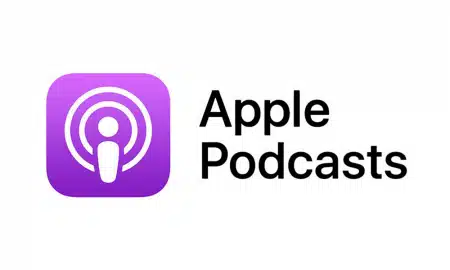Inputs/Outputs | Partner Sponsors: Allen & Heath and Shure
In live audio technology, staying abreast of the latest trends is crucial for ensuring optimal performance and efficiency. From churches to performance centers and corporate production facilities, the need for upgrades to live audio systems has become increasingly apparent. In this blog post, we’ll delve into three key areas of innovation: digital mixers, wireless microphones, and speaker systems.
Audio Mixers
Digital audio mixers have become the de facto standard for any application, large or small. They offer advantages such as better signal processing, flexible routing, the ability to store and recall settings, ease-of-use with optional mobile apps, and they are intuitive to use. The good news is that you don’t need to be an audio pro to operate this gear. These newer systems can be intuitive enough for a student or volunteer to quickly get up to speed on the basics.
- Comprehensive Digital Signal Processing (or DSP) eliminates large amounts of external gear, significantly reducing costs. It also allows you to achieve that warm analog sound if you like.
- Connectivity – Traditional XLR cables are starting to get replaced with ethernet. Audio-over-IP can send multi-channel audio over an ethernet cable.
There are a few common ip-based audio protocols- DANTE and AVB being the most common. Many manufacturers support these protocols with microphones, speakers, converters, I/O expanders. Anything in the audio ecosystem. With this technology, you can connect that 16, 32, or “whatever channel” stagebox filled with your wired microphones, guitars, drum kits, and more- to your Front of House console on a single ethercon cable.
This reduced cabling significantly lowers installation costs while increasing routing functionality.
For example- Perhaps you are a school or corporate campus. You could theoretically build a digital-ready podium on wheels that could be dragged from classroom to auditorium. Connect the podium to any ethernet port on the LAN network, and now that digital mixer located halfway across the campus could still be managing the audio channels without rewiring a thing.
- Presets – With the move to a modern digital mixer, you can preconfigure the mixer for various use cases. Perhaps you have an auditorium that has an orchestra performing with a large number of microphone inputs, only to be followed by a drama class that uses a mix of the same and different microphones. With a few button pushes on the screen, you can quickly jump back and forth between these preconfigured setups. A huge time saver! Combining presets gets powerful when you connect all your audio sources over an IP network.
For example- A college athletics video department could set up a preset for a stage box setup on a basketball court, with another stage box on the football field. Your video control room could quickly switch back and forth between these preset sources on the network- allowing you to live stream one event and then quickly move to the next.
- Built-in DSP (Digital Signal Processing) allows users to apply an endless variety of effects, EQ, and dynamics processing without needing external gear—delay, reverb, and effects for optimal sound processing at their fingertips.
- Ease of Use – While compelling, these mixers can still be very easy. For example, digital audio mixers from the same manufacturer operate mainly the same way. If you start on a 12-fader Allen & Heath and learn the interface and menu system, the layout will be mostly the same as the 36-fader dLive mixer used for more significant events. While the larger consoles will have additional processing, routing, and interconnectivity, the experience of using the layout of faders and software is similar.
- Touchscreens – Current touchscreen technology has come a long way! Manufacturers have made big advancements, resulting in a functional touch screen that can be a lifesaver in many productions.
For example, a modern channel EQ can now be adjusted quickly and intuitively – all while being overlayed on a real-time frequency analyzer.
- IOS and Android APPS allow you to mix from anywhere in your facility. It’s a complete game-changer. Controlling your mixer from an APP means you can walk around a venue with the freedom to adjust your mix. That APP can also be customized to whatever layout or function you desire. Perhaps you have a volunteer using the iPad at a town hall meeting who can just “mute” or “unmute” a microphone, and that is all it does. That volunteer doesn’t need to be an audio pro and can provide a vital function at a rowdy town hall meeting.
We didn’t cover a lot, like the expanded connectivity options that allow you to connect USB or Thunderbolt devices, automatic mixing algorithms, scene recall, simplifying complex setups, and allowing users to save and quickly switch between different configurations.
Wireless Microphones
Regarding advancements in Wireless microphones, it all comes down to monitoring and managing challenges—conflicting frequencies in increasingly smaller frequency ranges.
- Changes in available frequencies – Over the last several years, The FCC has auctioned off the wireless spectrum in the 2.5GHz range where wireless microphones live. The amount of broadcast space has been halved, and wireless microphones must work within that smaller space.
- LED Walls – Besides available frequencies, other devices added to the show, such as LED walls that are growing in popularity, can cause interference.
- RF Scanning Tools & Frequency Managers – Wireless audio companies provide easy solutions with free RF scanning tools like the Shure Wireless Workbench. These apps help audio professionals assess their real-time availability of RF channels while also assessing RF environment data.
For those mission-critical productions, there is also a 1RU Digital Spectrum Manager, which provides real-time scanning and monitors frequencies available and will use automatic frequency management to switch between the frequencies seamlessly.
- Audio-over-IP has become the dominant answer to resolving the reduction of RF frequencies available. Wireless audio is transitioning from antennas to wireless routers, allowing production to deliver more wireless sources over a network.
- Battery Life – Many advancements have been made to monitor other common issues, such as wireless and battery life! You can now see a countdown of battery life in real-time- both at the receiver and the belt pack. This allows you to be proactive before your battery dies.
- Encryption – Another advancement is with security. Previously, anyone could use an RF tuner to tune in and listen to your audio signals. This has led to some very embarrassing leaked audio moments. When security matters, AES-256 encryption is now the standard. You can also remotely control the transmitter using systems like Shure “Showlink.”
- Durability – Advancements for harsh environments! There are a variety of microphones that are now built to withstand the harshest environments- including moisture, wind, and dust. And, for those large LED walls in venues- there are “shielding” options designed to reduce noise.
Loudspeakers System
In recent years, loudspeaker systems have seen many innovations aimed at improving performance, versatility, ease of use, and reducing size.
- Cat6 vs. Snakes – For Speaker Systems, the old school heavy analog “snakes” required to connect mid-to-large sized line arrays and speaker systems are quickly getting replaced by Cat6 ethernet cable. The most obvious benefit being the cost reduced lightweight nature of running a single cable, that can carry multiple channels of audio to patch.
- Open-source application layers like Milan are continuing to see advancements and picking up a lot of steam with partners like Meyer Sound, L’Acoustic, and others. Built on the AVB protocol, Milan allows for the delivery of control and media over an ethernet cable. As more manufacturers continue to innovate in the network-based space, we will see a reduced need for cabling and a general simplification of controlling speaker systems.
- Speaker System Design has also seen some significant improvements. The weight and size of speakers have gone down considerably. This has added some flexibility to the number of speakers and subs required to fill a room, as well as things like weight loads for rigging.
- Acoustics Software – There’s also been significant development in acoustic simulation programs such as EASE or MAPP3D. These apps allow you to model and predict how speaker systems perform in your space before you buy them. They offer 3D modeling of line arrays, sub arrays, digital steering columns and conventional loudspeakers. This allows for accurate decisions on how many line arrays, speakers, and subs you might need. And they’re free?
Another application worth mentioning is SMAART. SMAART is a phenomenal tool for measuring and tuning your audio system for a room or venue.
There are a host of innovations in loudspeakers, including advancements in rigging for easier and safer installations, active DSP integration, and advancements in enclosure design to minimize resonance and unwanted vibrations. Reach out to Key Code For more information.
Conclusion
This has been a high-level update of the advancements in Live Audio Systems over the last ten years. Hopefully it provides a broad understanding on current Audio technology.
If you are currently exploring new live audio systems– reach out to the Key Code Media audio team. We are a live audio and video reseller and systems integrator helping with everything from designing full facilities to helping purchase the right product. We are a reseller of over 400 products for production, broadcast, and audio visual systems, including top audio vendors like Allen & Heath, Shure, JBL, Yamaha, Sennheiser, Lectronics, QSC, and more.





